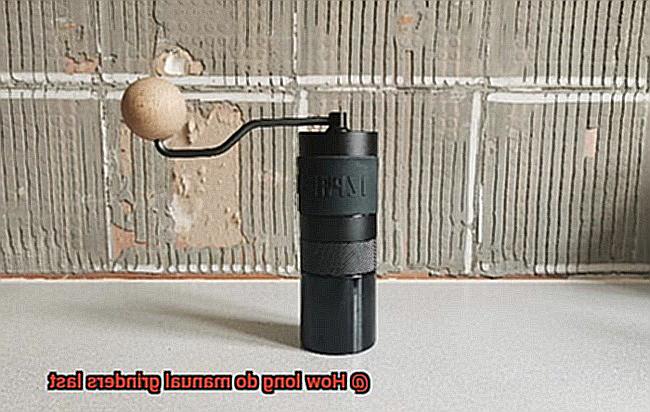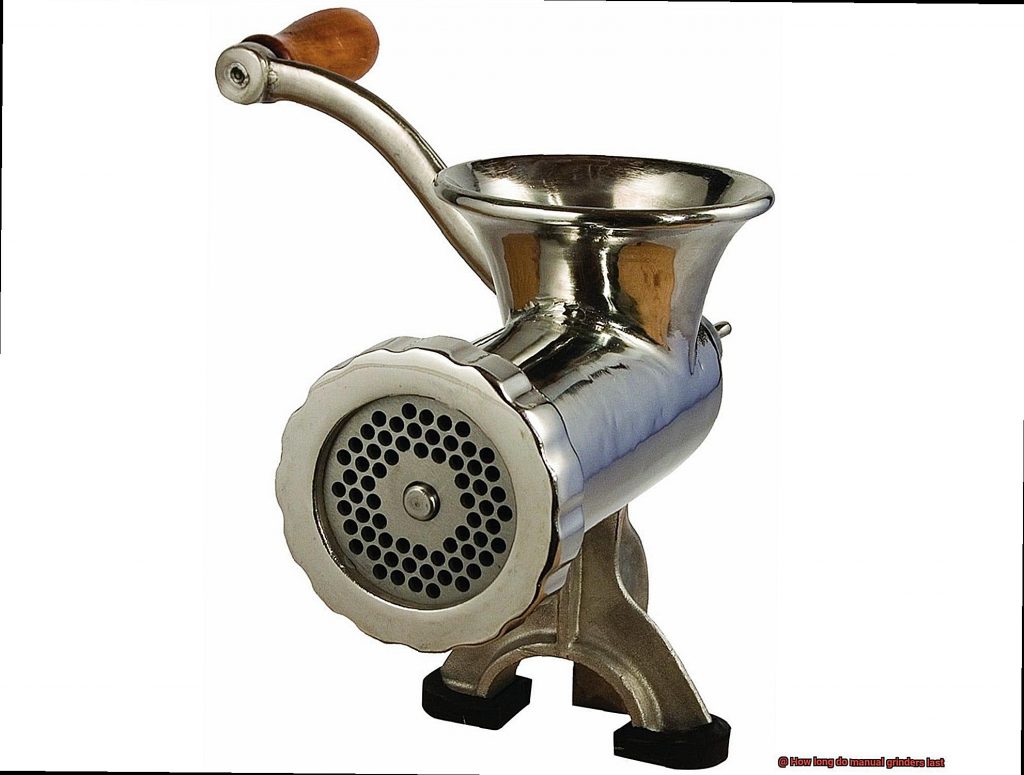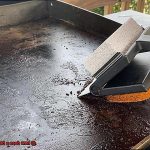Are you a coffee aficionado who values the taste of freshly ground beans over pre-ground coffee? If so, you may own a manual coffee grinder. Manual grinders are a favorite among coffee enthusiasts for their simplicity and ability to produce an authentic grind. But how long can you expect your manual grinder to last?
The answer isn’t as simple as you might think. The lifespan of a manual grinder depends on several factors, including how often it’s used, its build quality, and how well it’s maintained. Neglecting any of these factors could significantly reduce the longevity of your grinder.
So, what is the typical lifespan of a manual grinder? Will it last for years or need replacing after just a few months? In this blog post, we’ll delve into the world of manual coffee grinders and explore the factors that contribute to their lifespan. We’ll also discuss tips for maintaining your grinder to maximize its longevity and ensure you enjoy freshly ground coffee for years to come.
Contents
What is a Manual Grinder?
Unlike electric grinders, manual grinders require physical effort to operate, giving you more control over the coarseness of your grind and the final product.
A manual grinder typically consists of a hopper, a burr or blade mechanism for grinding, and a container to catch the ground material. They come in different sizes, shapes, and materials, such as plastic, metal, or wood, offering portability for camping trips or compact spaces, or larger options for at-home use.
One of the significant advantages of using a manual grinder is the ability to control the grind size. This can affect the taste of your coffee or spice. Also, manual grinders are generally less expensive than electric ones and do not require electricity to operate.
The lifespan of a manual grinder depends on factors like the materials used to make it, frequency of use, and maintenance. High-quality manual grinders made with materials like stainless steel or ceramic burrs tend to last longer than those made with lower quality materials. Additionally, if you use your manual grinder frequently or grind harder or denser materials like spices or herbs, it may wear out faster.
Proper maintenance is crucial in keeping your manual grinder functioning smoothly for longer. Regular cleaning and oiling can prevent rust and ensure that the internal mechanisms continue to work properly. With proper care and maintenance, a high-quality manual grinder can last anywhere from 3-5 years or even up to 10 years or more.
Factors that Affect the Lifespan of a Manual Grinder
Then, you understand the importance of having a reliable manual grinder. But have you ever wondered what factors influence its lifespan? Well, let’s dive into the key factors that affect the longevity of a manual grinder.
First and foremost, the quality of materials used in manufacturing plays a significant role in determining the lifespan of a manual grinder. Opting for high-quality materials like stainless steel or ceramic, which are more resistant to wear and tear, can significantly extend the lifespan of your grinder. Conversely, cheap materials like plastic or low-grade metals are more prone to breaking or cracking, reducing their lifespan.
Another crucial factor is the frequency of use. If you’re someone who enjoys multiple cups of coffee daily, your manual grinder will experience more wear and tear than one that’s only used occasionally. As a result, frequent use can lead to faster degradation of the grinder’s parts, ultimately reducing its lifespan.
Maintenance is also essential for prolonging the life of your manual grinder. Proper maintenance involves cleaning it after every use and regularly lubricating moving parts to prevent rusting. Neglecting these procedures can cause your grinder’s parts to deteriorate quickly, leading to early failure. Ensuring that you take good care of your manual grinder will keep it functioning well for years to come.
Lastly, proper storage is critical in determining how long your manual grinder will last. Storing your grinder in a damp or humid environment can cause rusting or corrosion, which can damage its parts and reduce its lifespan. It’s best to store your manual grinder in dry and cool places to extend its lifespan.
Materials Used to Make Manual Grinders
Let’s start with the ever-popular stainless steel. This material is a top choice due to its unbeatable durability, resistance to rust and corrosion, and easy maintenance. However, keep in mind that stainless steel grinders can be quite heavy, which makes them less portable than other materials.
Next up are ceramic grinders. These are known for their impressive durability and ability to grind coffee beans into a consistent size, making them the go-to choice for those looking for a precise grind. Additionally, ceramic grinders can be lighter than their stainless steel counterparts, making them a great option for on-the-go coffee enthusiasts.
Another material used to make manual grinders is acrylic. While less common than stainless steel or ceramic, acrylic is lightweight and easy to clean. However, it may not be as durable and can be prone to scratches and cracks over time.
When selecting a manual grinder, don’t forget to consider the internal components. Some may use plastic or nylon components that may wear out faster than metal components, affecting the longevity of the grinder.
Ultimately, the lifespan of your manual grinder depends on several factors, including the materials used, frequency of use, and maintenance. With proper care, a high-quality manual grinder can last for years, making it a smart investment for any coffee lover.
Frequency of Use
You probably own a manual grinder to ensure the perfect grind every time. However, have you ever thought about how the frequency of use affects the lifespan of your grinder? Let’s take a closer look.
Firstly, it’s important to keep in mind that the quality of materials used in your grinder is a significant factor in determining its lifespan. If you’re a frequent coffee drinker who uses your grinder multiple times a day, investing in a high-quality stainless steel or ceramic grinder will ensure it lasts longer than one made with cheap plastic parts.
But don’t worry, even with frequent use, a well-made manual grinder should last for years. The key to extending its lifespan is proper maintenance and care. Regular cleaning and gentle handling are crucial to ensuring your grinder stays in top shape.
However, it’s not just about how you treat your grinder, but also what you put inside it. Avoid grinding anything other than coffee beans, as foreign objects can damage the burrs and cause them to wear down more quickly.
Lastly, be mindful of how much force you use when grinding. Excessive pressure can put unnecessary strain on the components of your grinder and shorten its lifespan.
Harder or Denser Materials
Stainless steel is one of the most popular materials used in manual grinder construction. Its strength, durability, and resistance to corrosion make it an excellent choice for frequent use. Moreover, stainless steel is easy to clean and maintain, ensuring your grinder stays in top shape.

Ceramic is another favored material for manual grinder burrs due to its hardness and ability to produce consistent grind sizes. Coffee enthusiasts adore ceramic for its high durability and resilience over time.
Conversely, manual grinders made with plastic or cheap metals may not last as long and are more prone to breaking or wearing down over time. Although these materials are inexpensive and easily available, they may not be the best choice for those seeking a durable and reliable manual grinder.
However, it’s not just about the materials; proper care and maintenance of your manual grinder can also affect its longevity. Regular cleaning, proper storage, and avoiding excessive force when grinding can all contribute to prolonging the life of your manual grinder.
Proper Maintenance and Care
Not only will it ensure that your grinder operates smoothly, but it will also save you money in the long run. So, let’s dive into some essential tips for taking care of your manual grinder.
First and foremost, keeping your grinder clean is a must. After each use, grab a soft brush or cloth and wipe down both the exterior and interior parts of the grinder. This will prevent any leftover residue from building up over time, which can cause damage or affect the taste of your coffee.
Checking the burrs regularly is also critical. These metal plates are responsible for grinding your coffee beans, and over time, they can become dull or damaged. If you notice any signs of excessive wear or damage, it’s time to replace them. Trust me; it’s worth the investment.
Lubricating the moving parts of your manual grinder is just as important. Use food-grade lubricant on the burrs and other moving parts to prevent rust and ensure smooth operation. This will keep your grinder running smoothly and prevent any unwanted noises or clogs.
Proper storage is another crucial aspect to consider. Keep your manual grinder away from moisture and excessive heat. Store it in a dry place with moderate temperature, away from direct sunlight. This will prevent rust and damage to the grinder components, ensuring that it stays in top-notch condition.
Lastly, always refer to the manufacturer’s instructions for proper maintenance and care. Different grinders may have specific requirements, so following these instructions will help keep your manual grinder in optimal condition for years to come.
In summary, here are some key takeaways:
- Keep your grinder clean after each use.
- Check the burrs regularly and replace them if necessary.
- Lubricate the moving parts with food-grade lubricant.
- Store your grinder in a dry place away from moisture, heat, and direct sunlight.
- Always follow the manufacturer’s instructions for proper maintenance and care.
Average Lifespan of a High-Quality Manual Grinder
And let me tell you, it’s an important question to ask. After all, these grinders can be quite an investment, and you want to make sure you’re getting the most out of your purchase.
So, what determines the lifespan of a manual grinder? Well, it all boils down to a few key factors. Firstly, the quality of the materials used in its construction is crucial. If your manual grinder is made from durable materials such as stainless steel or cast iron, it can last for many years and even decades with proper care. However, if it’s made from cheaper materials that are prone to wear and tear, its lifespan may be significantly shorter.
Moreover, the frequency of use also plays a significant role in determining its lifespan. If you use your manual grinder regularly, it will naturally experience more wear and tear than if you only use it occasionally. This means that proper maintenance is essential to ensure that your grinder stays in great condition over time. Neglecting your grinder and failing to clean it regularly or follow the manufacturer’s instructions can shorten its lifespan.
In general, a high-quality manual grinder that is well-maintained and used regularly can last for at least 5-10 years. However, some manual grinders have been known to last even longer. In fact, I’ve come across stories of manual grinders lasting for over 20 years with proper care.
It’s crucial to bear in mind that the type of beans you grind can also impact your grinder’s lifespan. Harder beans like Robusta or dark roasted beans can put more strain on the burrs and require more frequent cleaning and maintenance.
lc5q15Q6EdA” >
Conclusion
To sum it up, the lifespan of a manual grinder is influenced by various factors. The quality of materials used in its construction, frequency of use, and maintenance all play crucial roles. Opting for high-grade materials such as stainless steel or ceramic can significantly increase your grinder’s durability. Proper maintenance involves cleaning it after every use and regularly lubricating moving parts to prevent rusting.
It’s worth noting that frequent use can lead to faster wear and tear on your manual grinder. If you’re an avid coffee drinker who enjoys multiple cups daily, your grinder will experience more degradation than one that’s only used occasionally. This can ultimately reduce its lifespan.
However, with proper care and maintenance, a top-notch manual grinder can last anywhere from 3-5 years or even up to 10 years or more. It’s important to keep in mind that the type of beans you grind can also impact your grinder’s longevity.
Investing in a high-quality manual grinder is a wise choice for any coffee lover who values freshly ground beans over pre-ground coffee. By following these tips for maintaining your grinder and ensuring proper care, you’ll be able to enjoy deliciously brewed coffee for years to come.






